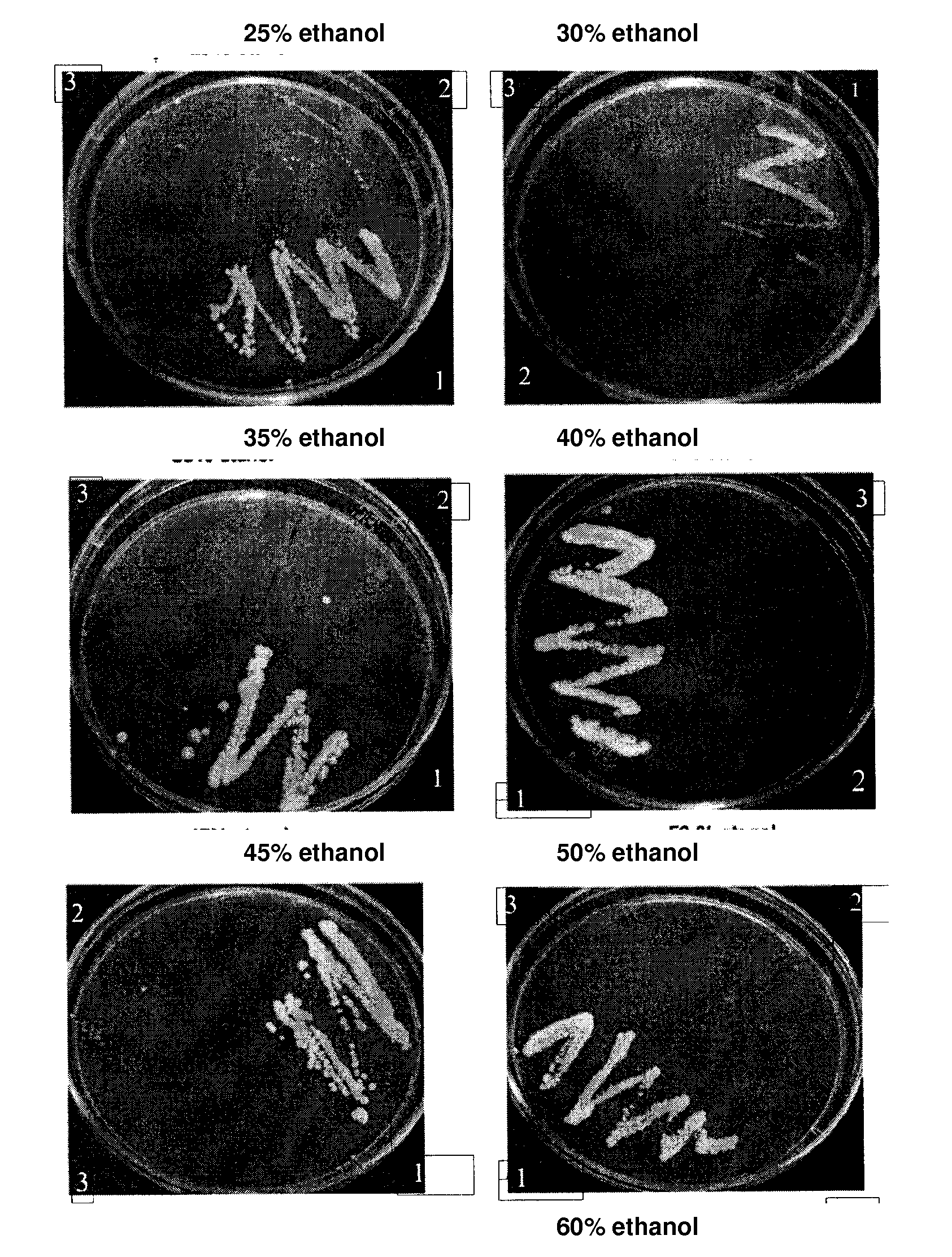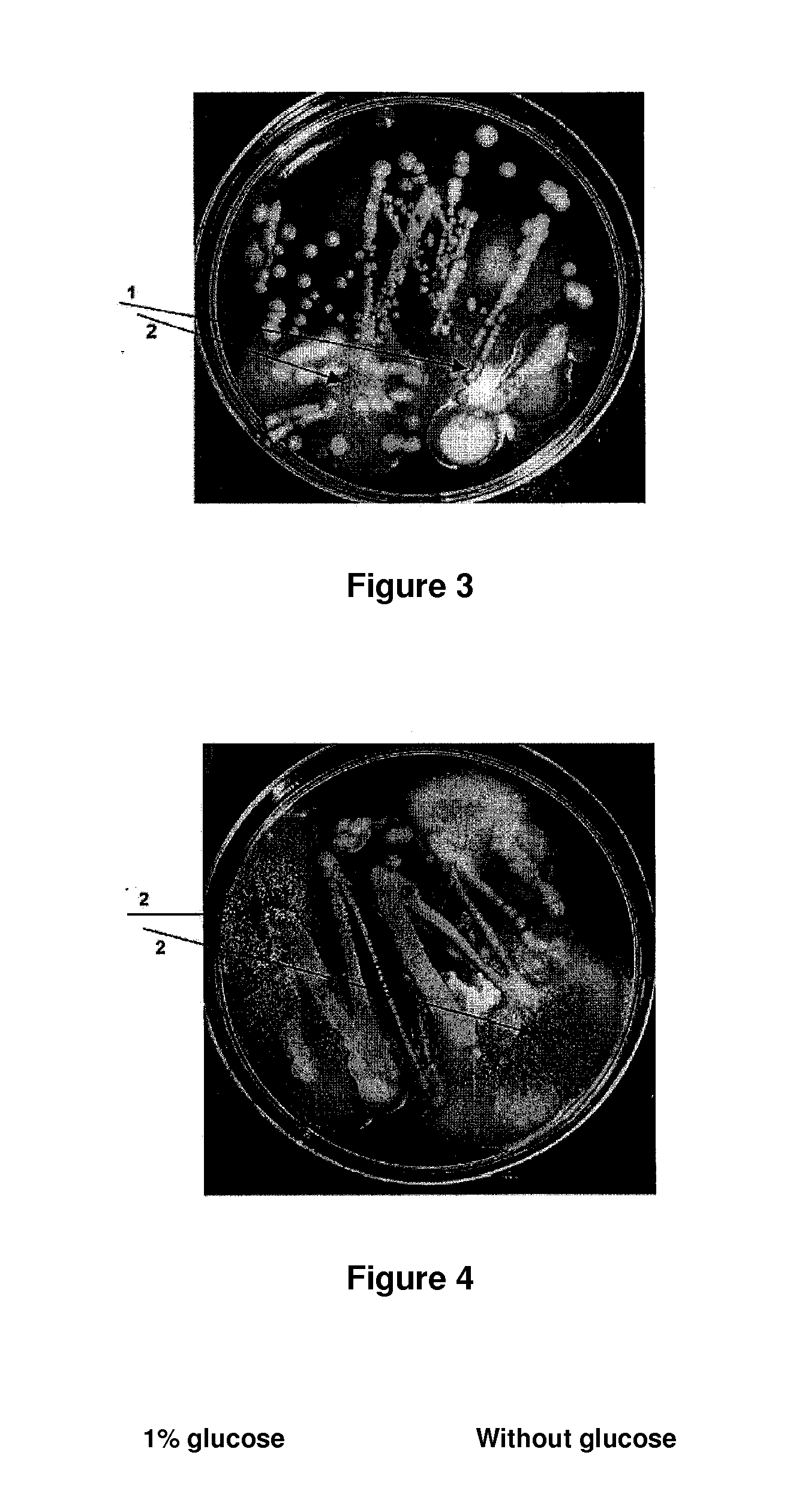Vineyard culture method enabling the yeasts thereof to be obtained for high sugar and alcohol content fermentation
a technology of yeast and grapevine, which is applied in the field of grapevine culture method, can solve the problems of low immunity system, wine without consistency, and ensuing risk of infection, and achieve the effect of high alcoholic grad
- Summary
- Abstract
- Description
- Claims
- Application Information
AI Technical Summary
Benefits of technology
Problems solved by technology
Method used
Image
Examples
embodiment no.1
Embodiment No. 1. Resistant Vineyard Culture Method
[0060]a). Culture Conditions:
[0061]Work initiated in 1989, selecting Bobal, Crujidera, Royal and Tardana autochthonous grapevines. Since the very beginning agriculture was totally natural, no chemical or organic fertilizer was employed except compost elaborated with herbs from the soil wherein the grapevines were planted. The former object corresponds to the First Object of the Invention, resistant vineyard culture method, consisting in achievement of resistant grapevines by themselves, able to be self-sufficient and relying on the soil's own nutrients, thereby developing deep and strong roots. Thus, the grape acquires flavors and aromas reminiscing the soil they are cultivated at. There was no irrigation though rainfall rate in the area was under 500 l / m2, typical of a continental dry climate (between 300 to 500 mm rainfall). This also corresponds to the First Object of the Invention for the culture type, furthermore enabling adapt...
embodiment no.2
Embodiment No. 2. Wild Yeasts thorough Fermentation Method
[0066]According to the Second Object of the Invention, wine is obtained:[0067]elaborating a wild grapes' barrel with pressed grapes, in vats of less than 5,000 liters, over 20-25% of said volume, or an equivalent proportional relation, to reproduce the yeast, that is, the wild or natural yeast of the grapevine.[0068]fermentation duration: 15 to 20 days reaching 3.5 to 6% volume of alcohol.[0069]from this wild grapes' barrel, 15 to 20% of the container's volume was added every 7 to 15 days, performing a stepwise fermentation and contributing in this manner oxygen and nutrient to the yeasts, raising alcoholic graduation until all the sugar is fermented, and[0070]achieving final alcoholic grade between 16-19% alcohol volume.
[0071]2.1 Production since 2002: In 2002 and 2003 juices were produced with 15.5° alcohol, obtaining in 2004 a concentration of alcohol between 15.5 and 18.98% volume.
[0072]In this manner a wine is obtained w...
embodiment no.3
Embodiment No. 3. Capability of Mixed Cells in Sucrose (Commercial Sugar) Fermentation
[0112]A culture medium is prepared in flasks with different concentrations weight / volume of commercial sugar. The medium components are:[0113]monopotassic phosphate 0.5%[0114]ammonium sulphate 0.2%[0115]heptahydrated magnesium sulphate 0.004%[0116]yeast extract 0.1%[0117]water
[0118]Sugar concentrations are: 1, 2, 10, 15, 20, 25, 30, 40 and 50%, all of them in weight / volume percentage.
[0119]Preparation of white yeast 1, yellow yeast 3, slow growth yeast 2 strains to be inoculated in different media:
[0120]The yeasts are seeded in liquid medium YPD (5 ml), colonies of the different strains grown in plates of YPD medium, each strain separately, and agitated during 24 hours at 240 rpm and 28° C. Once this time has elapsed and all the strains grown, 20 μl of each of them are placed in a test tube with 5 ml of the corresponding medium in each tube, agitating them at 240 rpm during 24 hours.
[0121]Once this...
PUM
| Property | Measurement | Unit |
|---|---|---|
| volume | aaaaa | aaaaa |
| total volume | aaaaa | aaaaa |
| climatic roughness | aaaaa | aaaaa |
Abstract
Description
Claims
Application Information
 Login to View More
Login to View More - R&D
- Intellectual Property
- Life Sciences
- Materials
- Tech Scout
- Unparalleled Data Quality
- Higher Quality Content
- 60% Fewer Hallucinations
Browse by: Latest US Patents, China's latest patents, Technical Efficacy Thesaurus, Application Domain, Technology Topic, Popular Technical Reports.
© 2025 PatSnap. All rights reserved.Legal|Privacy policy|Modern Slavery Act Transparency Statement|Sitemap|About US| Contact US: help@patsnap.com



